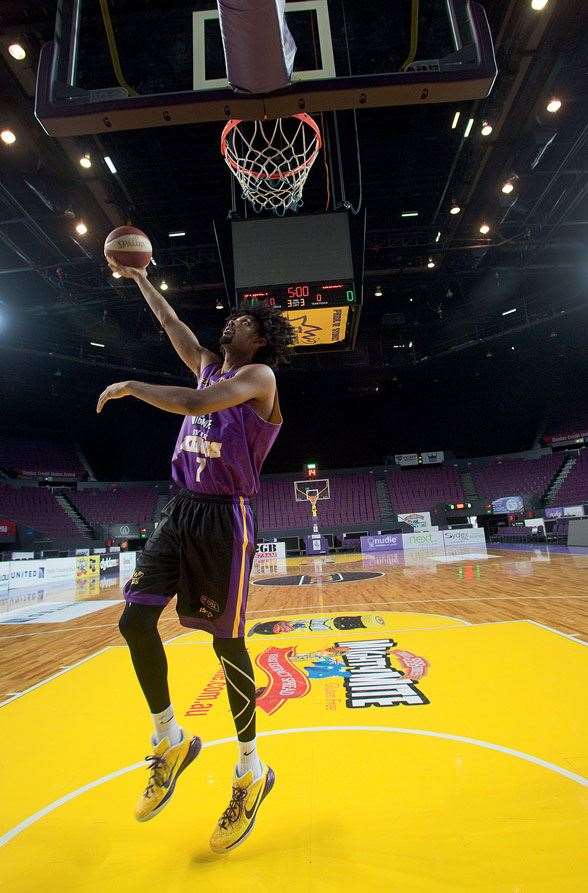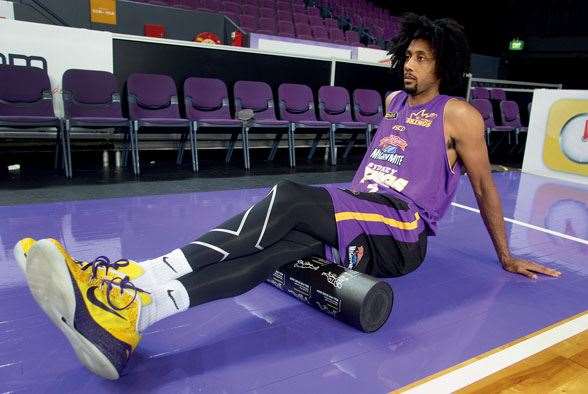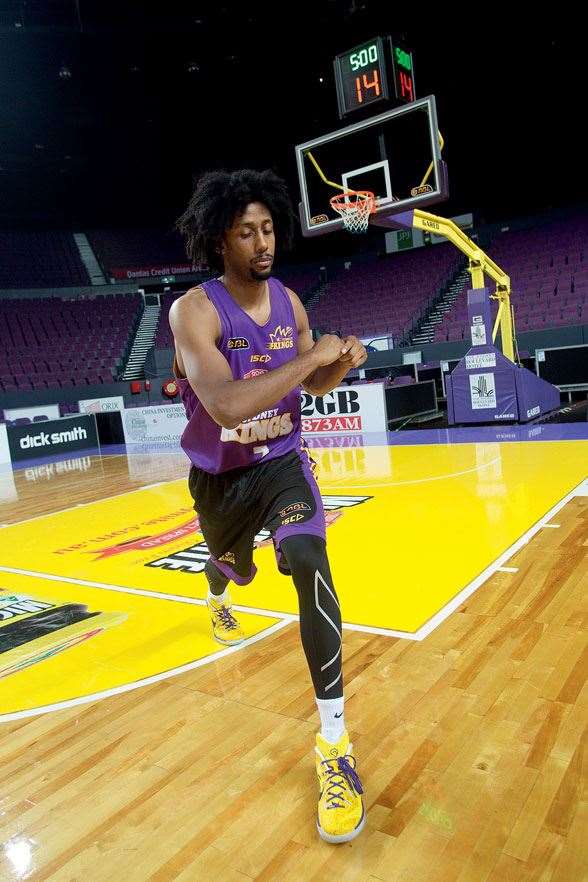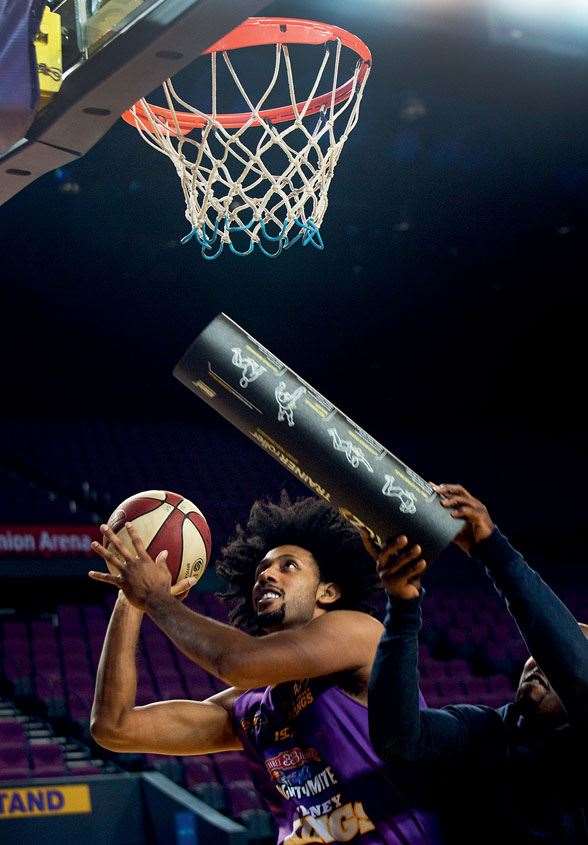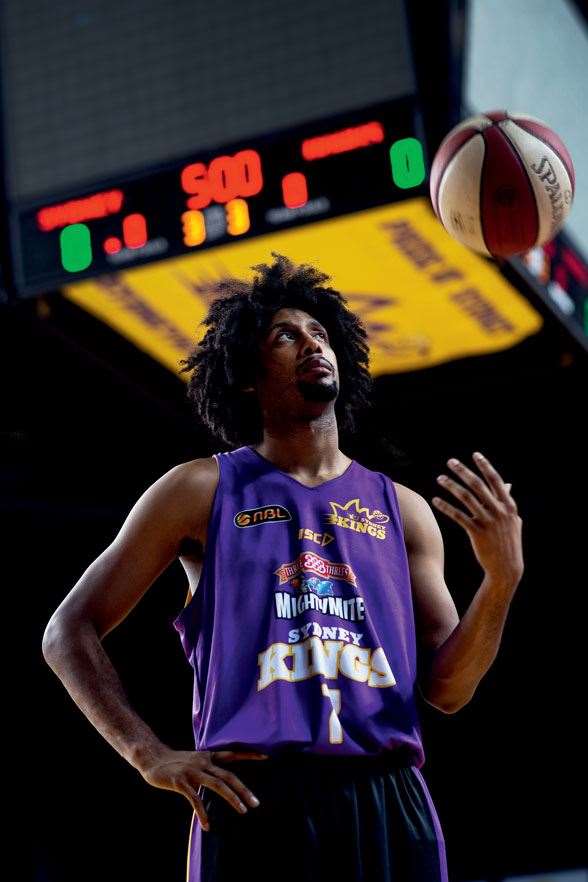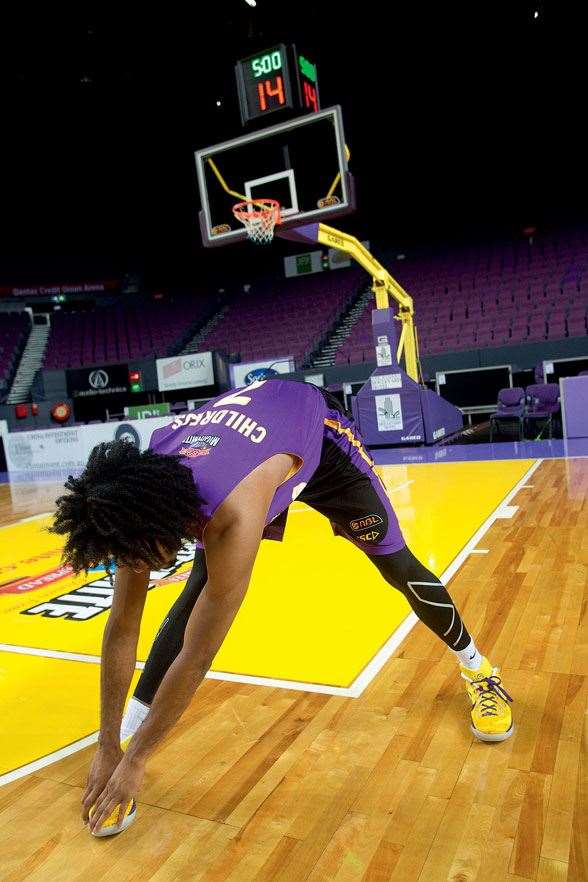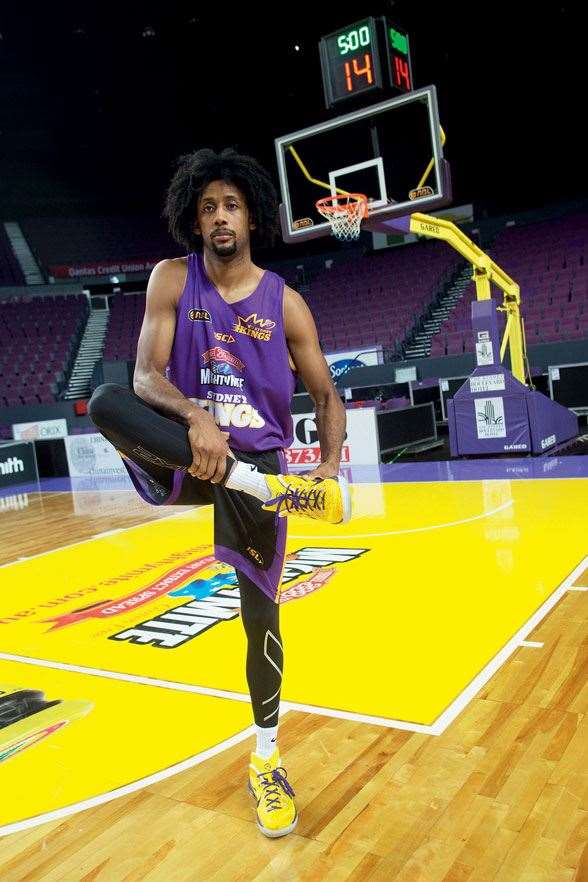NBA and NBL star shows us how it’s done.
THE DAYS OF HELLISH, mid-season hill runs are long gone. In the modern era, it’s all about quality over quantity as far as conditioning is concerned; the Sydney Kings have certainly adopted this philosophy in getting the best out of their star recruit, NBA veteran Josh Childress. With almost 400 games under his belt as part of solid Atlanta Hawks, Phoenix Suns, Brooklyn Nets and New Orleans Pelicans squads across nine years, as well as campaigns in the Euroleague and Greek league, the Kings have brought Childress here to learn from him and benefit from his expertise and experience – not flog him physically. Never before has the NBL boasted a player the calibre of Childress, his signature evidence of the improving appeal of the competition to players worldwide.
The 31-year-old will prove a crucial cog in the Kings’ play-off ambitions for 2014-15. An elbow to the head of a Perth Wildcats opponent in one of his first appearances was an early indicator of the passion the rest of the NBL can expect from the 203cm Californian-born star. Former Sydney assistant coach and now head of Kings basketball operations, Tim Hudson, is buzzing with excitement about what Childress brings to the Harbour City’s line-up. “His greatest asset is that he’s so malleable,” gushes Hudson. “He’ll grab a ball off the glass defensively, and two dribbles out he’s already near halfway. He’s what NBA teams would refer to as a point-forward. He’s a guy who rebounds as a forward, but can then carry the ball up the floor. He’s a genuine team player who likes to cut the space, get a lot of offensive put-backs. With his skillset and frame, he’s the type of guy who can really attack and slash and take the basket with an array of moves.” We rocked up to one of Childress’ first training sessions with the Kings to learn how he prepares for show-time.
GAME-EVE
“For a typical pre-game practice session the day before a match, first we’ll go watch film of our opponent, then we hit the court. But before I do, I’ll grab the foam roller and just kinda loosen up my legs, you know?
“I’ll then get on the floor and do a bit of ball-handling and get into some shooting drills, etc. We’ll run up and down the floor a little bit, practising attack moves; one-dribble, two-dribble attack moves, either for the lay-up or the jump shot. I’ll also do some competition-intensity shooting, try to get warm. That’s the outline of a normal warm-up for us – it lasts about ten minutes. I’m a bit older than the rest of the guys here but, you know, for me it’s just about warming up my joints, getting the blood flowing and getting me prepared for practice. I try to use that time just to get a sweat up so that when we start the next phase of practice, I don’t pull anything.
“After that we break right into preparing for tomorrow and work on parts of our specific game plan against, say, Townsville, in this case. We’ll run through our offensive sets, making sure everything is fine-tuned and detailed with what we’ll be attacking with. We’ll also break into full-on scrimmage. We usually end this practice session with things like ... for example, today the coach wanted some of us to finish with 100 three-pointers ... and some free-throws.”
TARGET PRACTICE
“Primarily, our assistant coach Robbie McKinlay makes sure all the Sydney Kings’ players are doing things in shooting practice that are suited to our personal games. For example, I’m usually doing some dribble drills, getting into the paint, doing some finishes; one-dribble, two-dribble pull-ups, and shooting corner threes out of our offense. But in a round-about way, even our personal drills get everybody involved, either dribbling, moving or shooting, just so we’re all active. Normally we’ll focus on our shooting for about ten minutes before moving on.”
QUALITY VS QUANTITY
“Since landing in Sydney and joining the team, I’ve discovered that our head coach Damian Cotter is very detail-orientated, which I like. I’ve played in a bunch of different places for a bunch of different coaches and everybody has their own style. Coach Cotter isn’t the type who will run you into the ground. I have had coaches who are like that, who make their players practice for two-and-a-half-to-three hours the day before a game, and I’ve had the complete opposite; I’ve had coaches who run practice sessions that last just 45 minutes the day prior to a game. Coach Cotter’s style is about teaching, about us being mentally prepared and physically prepared. It’s been good.”
PEAK CONDITION
“The most important aspect of my whole preparation would have to be my conditioning. That’s the part I’m working on getting better at now because of the fact I’d had some injury issues during the recent pre-season. The first thing that goes for you as a player is your conditioning. I also like to constantly make sure my movements are crisp, you know? Getting to my spots, ensuring I’m attacking when I need to.
“I run as much as I can. I try to run in intervals. A lot of professional athletes are into long-distance running as part of their conditioning, but that’s not really suited to the physical demands of basketball. So, you know, you sprint-stop, sprint-stop, kinda do variations of that. I’ve also used an altitude mask in the past to try to make it more difficult while I train.
“For basketball, though, I think more than most sports, I could be wrong, but nothing simulates game speed. Nothing accurately mimics the starting and stopping, having to guard somebody, to, you know, at the drop or on a steal, having to sprint back down court. Or after a missed shot, having to sprint back up court ... There’s nothing that simulates that better than playing. That’s one of the things I’ve asked Coach a little bit about concerning the next few weeks ahead; I’ve asked him to maybe make a little more time in practice for playing or scrimmaging a little more, just to kinda help me out a bit in terms of getting my conditioning better. All that helps team cohesion, too.”
FEEL IT
“Basketball is a lot about feel. It’s about touch; your ball-handling, your finishing and shooting. If you haven’t practised shooting for a little while, you definitely feel it. You know, for me specifically, everything is about feel, it’s about rhythm, it’s about just the flow of how I’m moving, about the flow of the game. I’ve had times where, let’s say after a season, or if I’ve been injured, I’ve come back onto the floor and the ball feels almost foreign – it’s either too heavy or light. You just don’t have the feel and that messes up everything else – messes up your timing, your rhythm. You always have to make sure you’re staying on top of that.”
GETTING SCHOOLED
“I went to Stanford University. I spent three years there; it was one of the best experiences of my life. It’s a great place; a great school, obviously. Just the college environment, awesome. Most of the guys on our current team went to college in the States and they say the same thing: ‘There’s nothing like college.’ I really enjoyed the entire process. The camaraderie, the ups and downs of it, it was fun. I studied sociology and graduated last summer. I played all the way through my studies, just trying to finish my degree over the years so that I was able to walk across the stage to that podium. It was really cool.
“I tried to take one-to-two classes each summer ‒ if I could. If I couldn’t, I would maybe take an online class during the year. Stanford only allows you to take, I think, about five online classes out of your total amount of units required, so I made sure I took advantage of my five! It was challenging at times. I was at a point professionally where I was doing well. It would have been easy for me to say, ‘You know? I don’t need that. I’m working, I’m making a good living, I don’t need to finish.’ But for me, it was about investing in myself and making sure I realised and remembered that there’s a long life ahead of me after basketball. I made the effort to continue and to finish ‒ now I’m a Stanford alumni. That opens up a lot of doors for me professionally. A lot of players I’ve come across over the years don’t think about their lives after basketball, and that’s something that’s concerning. But I think that if guys continue to see other players making that effort and being successful at it, that will only help the process.”
KING JOSH
TIM HUDSON ‒ Sydney Kings Head of Basketball Operations: “In our recruitment planning and pre-negotiation for this season, we wondered how we could go about attracting not only a big-name player, but a player who would be able to contribute a great deal to the NBL and to the city. There’s always talk about signing marquee players, but to be able to go out and get somebody like Josh Childress is just an absolute dream. He ticked the boxes: was he a big name? He’s a huge name ‒ the biggest that’s ever come into the NBL. Was he a good guy? He’s a tremendous guy. Really, when you look at him, it’s pretty simple. It’s one thing for an NBL club to get a player on the cusp, whose an NBA draftee, but to get a guy like Josh Childress, who has a unique brand and is a legitimate NBA player ... you don’t sign $30-odd-million-deals without being a stud at some point.”
Related Articles

Hoops training with Sydney Kings' Josh Childress
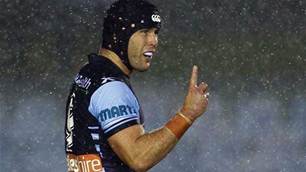
Training with the Cronulla Sharks' Michael Ennis


